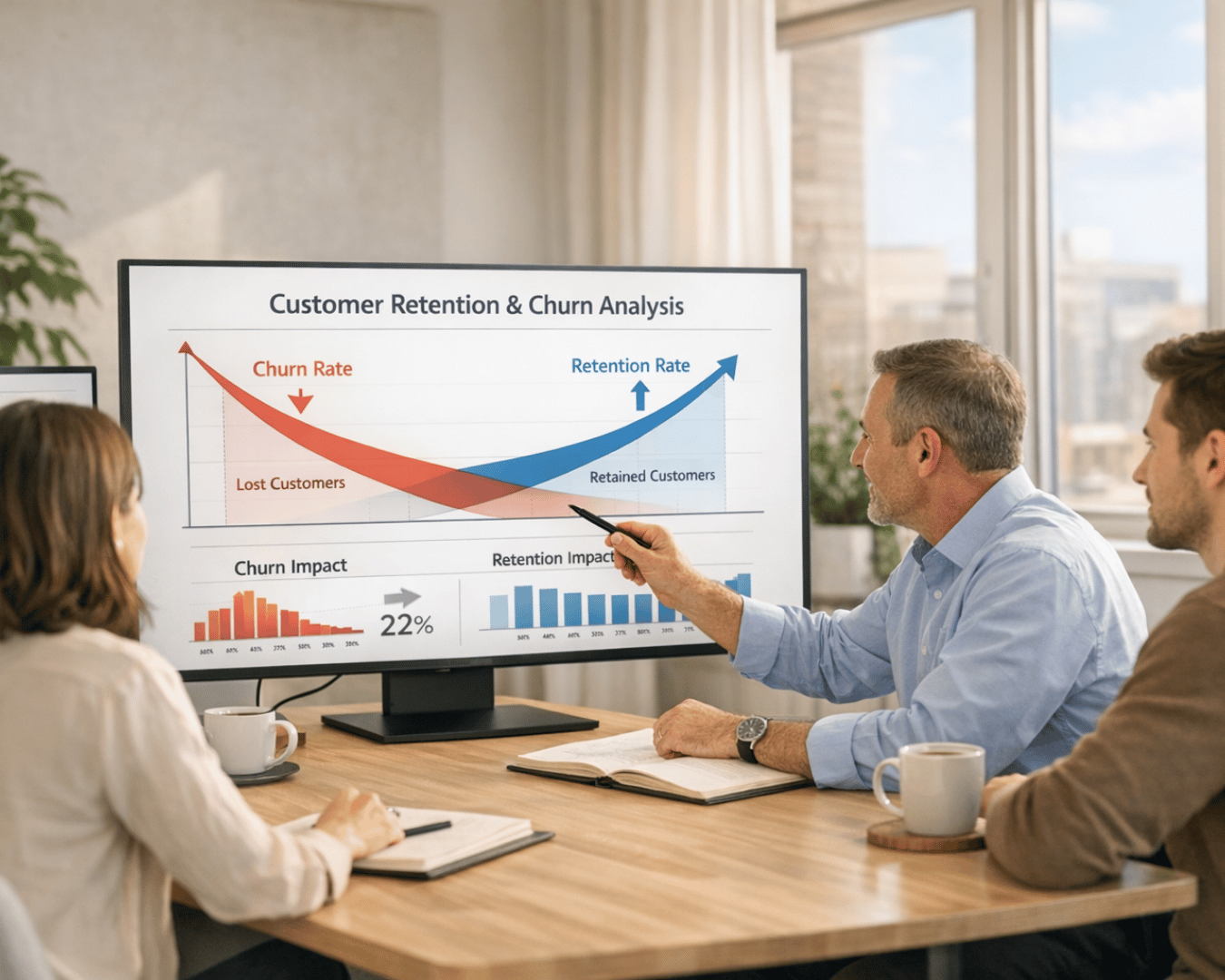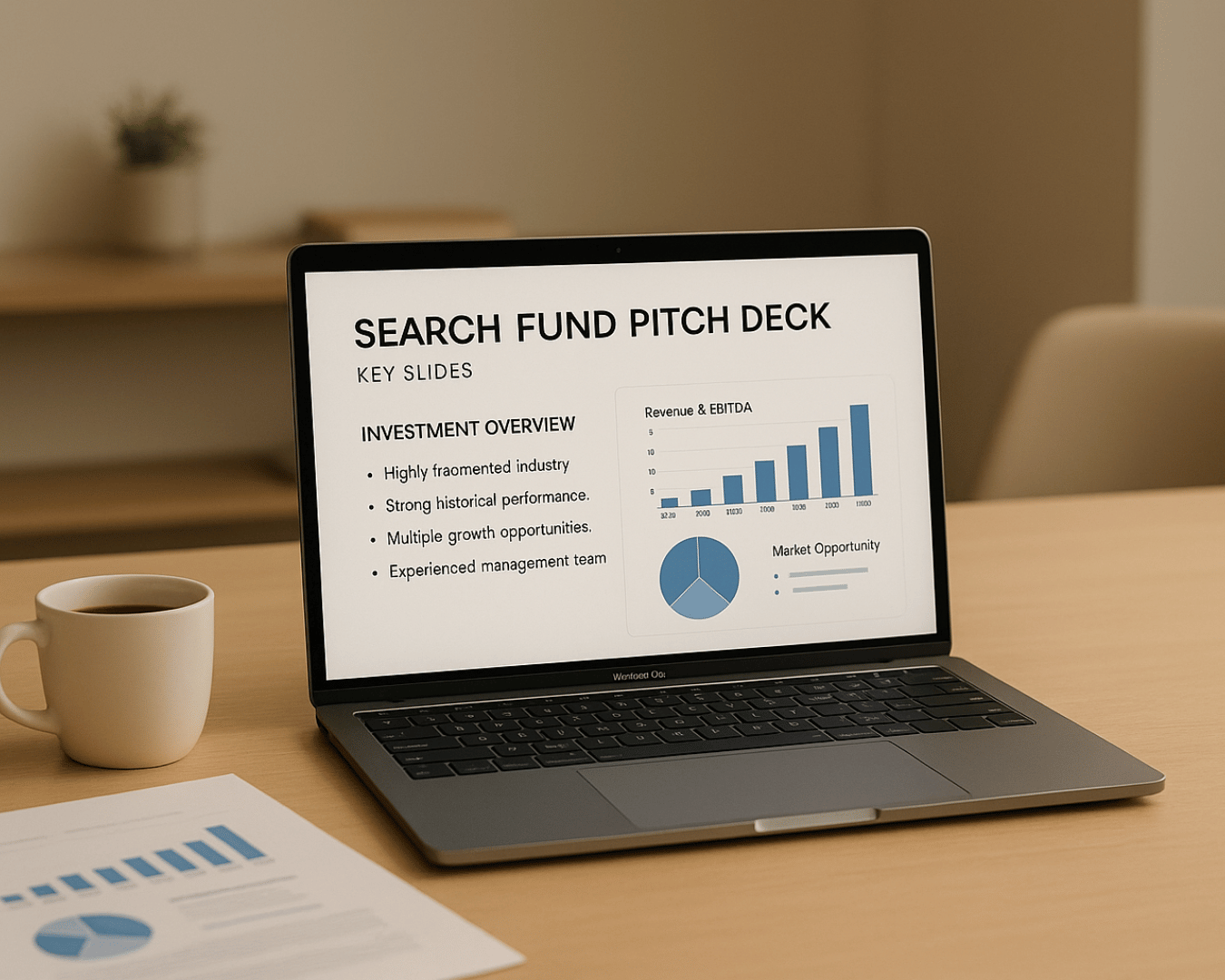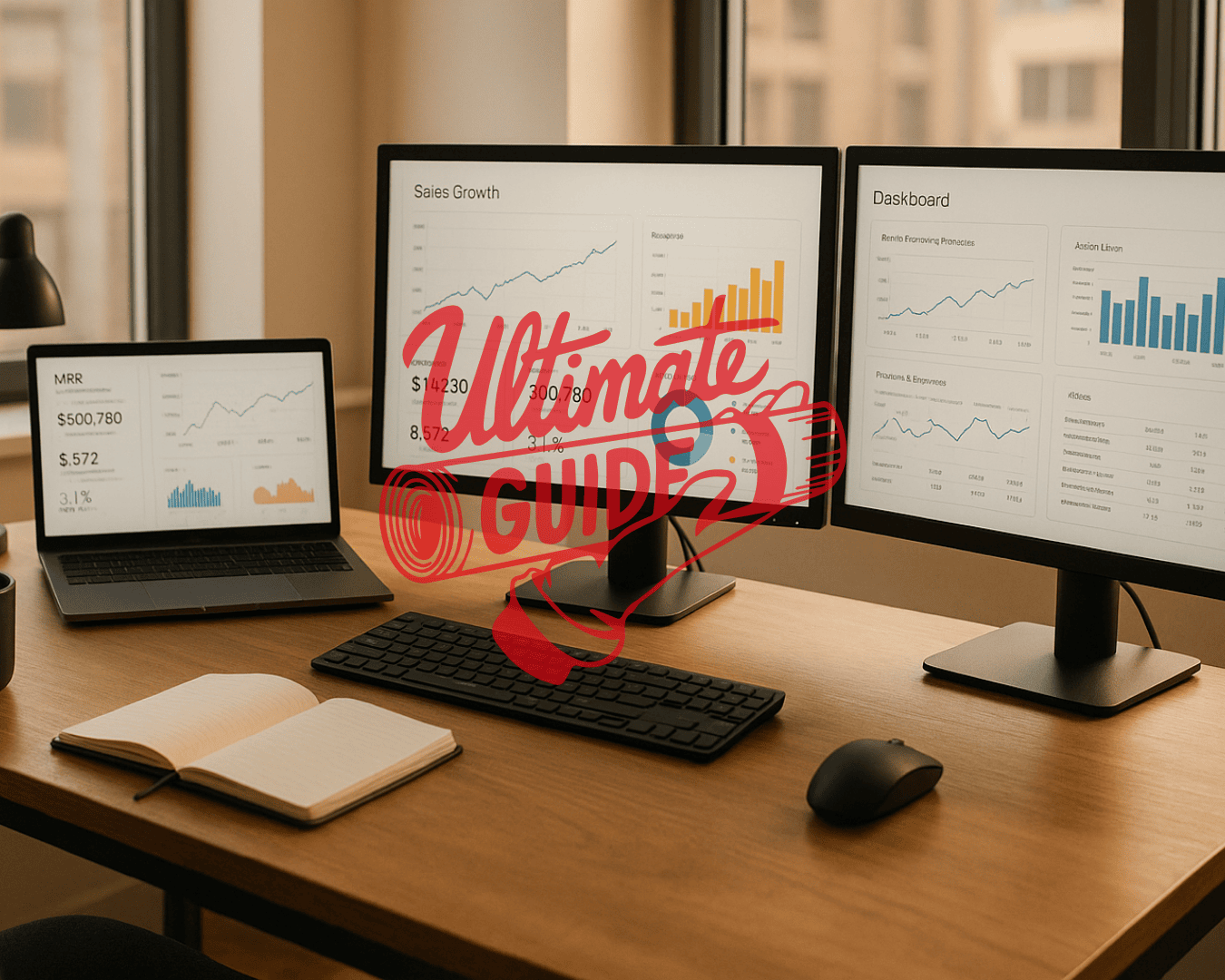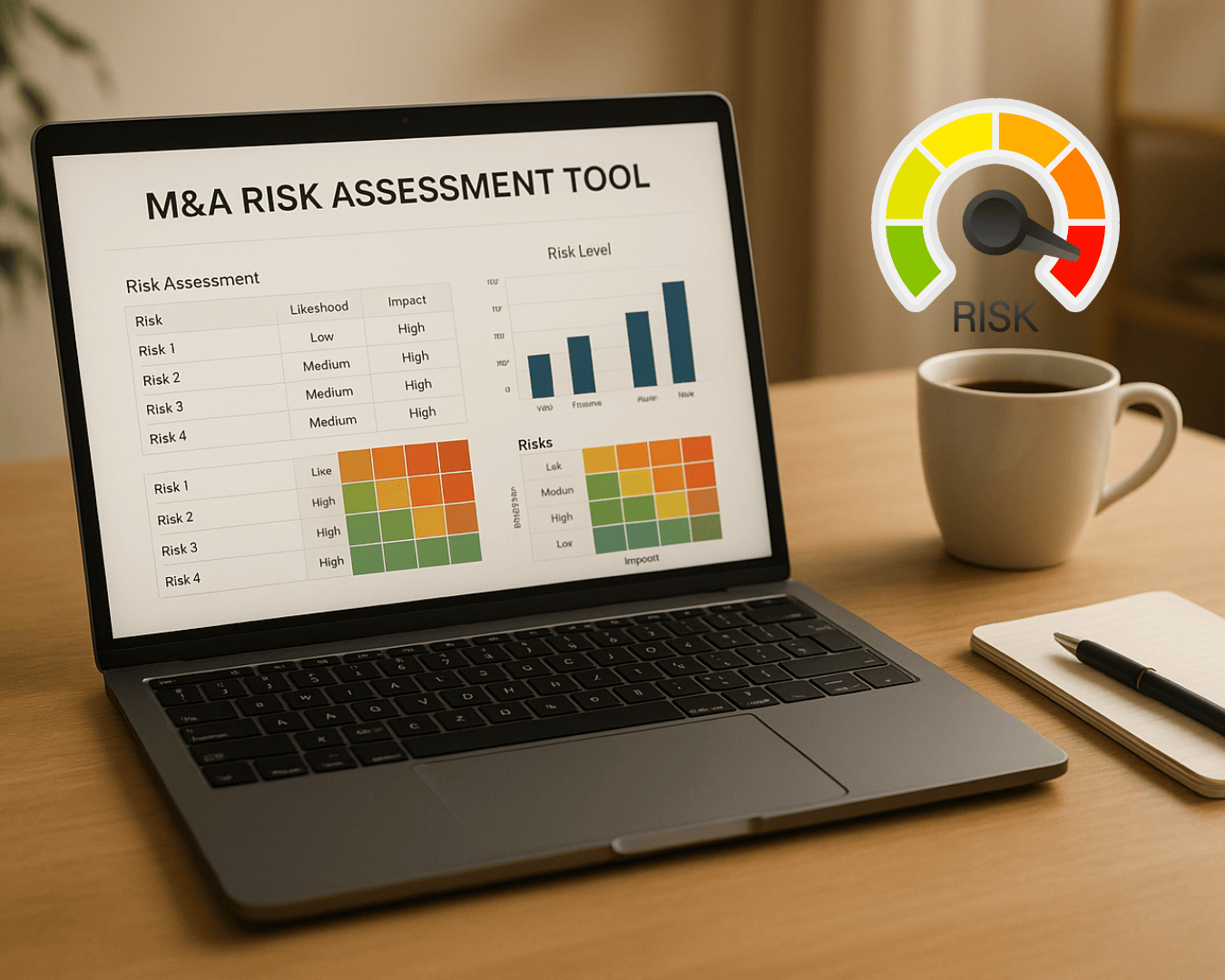- What are benchmarks? Benchmarks are metrics SMBs use to compare their performance with industry standards. Common metrics include profit margins, revenue growth, and customer acquisition costs.
- Why do they matter? They ground financial goals in market realities, helping businesses avoid overestimating or underestimating targets.
- How are they created? Benchmarks are based on historical data, market research, competitor analysis, and tools like NAICS codes.
- Forecasting approaches: SMBs use quantitative methods (e.g., regression models) for data-driven predictions and qualitative methods (e.g., expert opinions) when data is scarce.
- Cash flow forecasting: Direct methods focus on short-term costs, while indirect methods use financial statements for long-term planning. Poor cash flow management is a leading cause of SMB failure.
- Technology's role: AI tools and integrated software improve accuracy, automate processes, and provide real-time insights.
- Finding benchmarks: Sources like RMA, BizMiner, and government databases offer detailed financial data.
- Adjusting benchmarks: Tailor industry averages to your business size, location, and market conditions for better accuracy.
Bottom Line: Benchmarks guide SMBs in setting realistic goals, managing cash flow, and staying competitive. Pairing them with tools, expert advice, and regular reviews ensures better financial planning and growth.
Main Methods for SMB Financial Forecasting
Data-Based and Expert Opinion Forecasting Methods
Small and medium-sized businesses (SMBs) typically rely on two main forecasting approaches: quantitative methods, which are grounded in hard data, and qualitative methods, which draw on expert insights and market trends. The choice between these methods depends on the specific needs and resources of your business.
Quantitative methods involve mathematical and statistical models to analyze historical data and predict future trends. These methods are most effective when you have reliable historical performance data. For instance, time-series techniques like straight-line and moving average forecasting are straightforward and don’t require advanced statistical knowledge. However, their accuracy often falls short compared to more complex approaches like simple linear or multiple linear regression. For SMBs with limited analytical capabilities, these simpler methods offer a practical starting point.
On the other hand, qualitative methods rely on expert opinions, customer feedback, and market analysis to make predictions. These are particularly useful when launching new products, entering unfamiliar markets, or navigating situations where historical data is scarce or irrelevant.
Some industry leaders employ advanced techniques such as cohort analysis, bottom-up forecasting, customer behavior analysis, regression analysis, scenario analysis, and Monte Carlo simulations. While these methods might seem out of reach for smaller businesses initially, SMBs can start with basic approaches and gradually adopt more sophisticated tools as they grow and enhance their data collection capabilities.
Combining these methods creates a foundation for more advanced financial strategies, including effective cash flow forecasting.
The Role of Cash Flow Forecasting
Cash flow forecasting is one of the most essential tools for SMBs, especially given that poor cash flow management contributes to the failure of 82% of small businesses. This method allows businesses to predict their cash inflows and outflows, making it easier to plan spending, identify trends, and manage debt repayment schedules.
There are two primary approaches to cash flow forecasting:
- Direct cash flow forecasting: This method focuses on known costs and is best for short-term planning.
- Indirect cash flow forecasting: This approach uses projected balance sheets and income statements to make long-term predictions.
The direct method is ideal for immediate financial decisions, while the indirect method supports strategic, long-term goals.
The importance of accurate cash flow forecasting cannot be overstated. Studies show that 31% of SMBs have only enough working capital to last two months, while 58% can sustain themselves for three to five months. Additionally, a QuickBooks survey revealed that midsized businesses were owed an average of $304,066 in late customer payments. These figures underscore the need for precise forecasting to ensure both survival and growth.
"Financial forecasting is a critical process for small businesses, serving as a roadmap for future growth and stability." – DR Bank
By monitoring key metrics, cash flow forecasting helps businesses stabilize budgets, anticipate shortfalls, and make timely adjustments.
Advancements in technology also make cash flow forecasting more efficient, automating many aspects of the process and improving accuracy.
Using Technology in Forecasting
The rise of forecasting technology has transformed how SMBs approach financial planning. From advanced software to improved spreadsheet tools, these innovations simplify the forecasting process. However, selecting the right tool requires a clear understanding of your business needs and capabilities.
Just five years ago, 70% of small businesses still relied on traditional spreadsheets for forecasting - a method that’s not only time-consuming but also prone to errors. Modern tools, however, offer greater accuracy and efficiency. When choosing forecasting software, look for solutions that integrate seamlessly with your accounting system. This integration reduces manual labor, minimizes errors, and ensures real-time data updates, keeping your forecasts accurate and current.
AI-powered forecasting tools represent the next step in SMB financial planning. These solutions can process large datasets quickly, identify patterns, and even calculate complex variables with minimal input from users. They make advanced statistical analysis accessible to business owners without requiring specialized training, saving time and providing deeper insights.
For flexible financial planning, consider tools that support multiple scenarios and rolling forecasts. Rolling forecasts, in particular, allow businesses to continuously update their projections, ensuring they remain aligned with current market conditions.
Common Industry Benchmarks for SMBs
Top SMB Benchmarks by Industry
When it comes to financial forecasting, aligning your projections with industry norms is essential. Industry benchmarks serve as a reference point for key financial metrics, offering averages based on data from businesses within specific industries. For small and medium-sized businesses (SMBs), common benchmarks include gross profit margin, operating margin, change in net sales, days receivables, days payables, and debt-to-equity ratio. These metrics help you evaluate your performance and pinpoint areas needing improvement.
For example, retail businesses often track sales per square foot as a critical performance metric. Sporting goods stores in the western U.S., for instance, average a 36% gross margin. Manufacturing companies, on the other hand, prioritize metrics like cycle times, order fulfillment rates, and days sales outstanding. Service-oriented businesses, such as SaaS providers, focus on customer renewal rates, billable utilization, and the time it takes to close a sale.
Financial institutions also lean on benchmarks like profits before taxes relative to tangible net worth, current ratios, and funded debt-to-EBITDA ratios to evaluate loan applications. Familiarity with these metrics can strengthen your loan applications and help maintain strong financial health.
"Acquiring profitable customers is an essential part of any business's strategic goals. Business owners should regularly work to understand the average cost of acquiring a certain type of customer relative to the lifetime value of that customer. Then work to reduce customer acquisition costs by improving marketing strategy while determining ways to retain or upsell existing customers to increase customer value." - David Brim, Bright Impact
Finding and Understanding Benchmark Data
Reliable benchmark data is widely available through resources like RMA's Annual Statement Studies, BizMiner, and government databases such as the Statistics of U.S. Businesses (SUSB). RMA's Annual Statement Studies provide detailed financial data segmented by business size and location. BizMiner offers in-depth industry analysis, including financial benchmarks and competitive insights. Meanwhile, the U.S. Census Bureau's SUSB database provides free access to industry statistics, making it a valuable starting point.
In addition to these sources, trade associations and research firms often publish industry-specific reports with the latest benchmarks and trends, which can be especially useful for strategic planning. To ensure accuracy, consult multiple sources when analyzing benchmark data. Examining the financial statements of publicly traded companies in your sector can also provide insight into industry averages. Financial benchmarking tools, which aggregate data from numerous businesses, often allow filtering by size and geography, making it easier to find relevant comparisons.
Adjusting Benchmarks for Your Business
Once you’ve gathered benchmark data, it’s important to adapt it to your business’s unique circumstances. Raw benchmarks rarely apply perfectly without some adjustments. Factors like local market conditions, business size, and operational models all play a role in how benchmarks should be interpreted.
For instance, a restaurant in New York City will have vastly different rent-to-revenue ratios than one in a rural area. Similarly, larger companies may benefit from economies of scale, resulting in lower costs and higher margins compared to smaller businesses. Whenever possible, seek benchmarks segmented by business size to make more accurate comparisons.
Seasonality and business models also impact benchmarks. If your peak seasons differ from those of your competitors, your financial patterns may not align with industry averages. Additionally, businesses that use advanced customer segmentation in advertising often see significant performance gains. Google reports that advertisers leveraging analytics-based segments experienced a 63% increase in conversions and a 58% rise in click-through rates compared to untargeted campaigns.
To make benchmarks work for your business, compare your actual financial results to industry averages and document any differences in your business plan. Use benchmarks to guide decisions on marketing budgets, profit margins, and operational strategies, but always tailor them to your specific market position and growth objectives.
Regularly review how your strategies are performing against these benchmarks and make adjustments as needed. Remember, benchmarks are a starting point - not a one-size-fits-all solution. Use them to inform your financial planning while considering your unique circumstances, competitive landscape, and long-term goals. This approach ensures that benchmarks remain a tool for growth and informed decision-making rather than rigid targets.
Using Benchmarks in SMB Financial Planning
Using Benchmarks in Budgeting and Goal Setting
Industry benchmarks are a powerful tool for setting realistic budgets and growth targets. By aligning your financial metrics - like marketing spend, customer acquisition costs, and lifetime value - with industry averages, you can create a solid foundation for your financial planning.
For instance, if your sector typically operates with a certain gross margin, you can use that figure as a baseline for your projections. However, your business's unique circumstances matter, too. A newer company might aim slightly below the industry average initially, gradually working toward those benchmarks as it grows and stabilizes.
Pairing benchmark data with a SWOT analysis can provide even deeper insights. The Business Development Bank of Canada describes SWOT analysis as:
"A framework for identifying and analyzing your organization's strengths and weaknesses, as well as the opportunities and threats you are facing".
When you incorporate benchmarks into your SWOT analysis, you can pinpoint areas where your business excels or lags compared to industry norms. This combination helps refine your budgets and adapt your forecasts to shifting market dynamics.
Adjusting to Market Changes and Seasonal Patterns
Benchmarks shouldn't be static - they need to evolve with market conditions and seasonal trends. Successful small and medium-sized businesses (SMBs) rely on a mix of historical data and real-time market insights to keep their forecasts accurate.
A seasonal trend calendar is an essential tool for managing these changes. Identify your busiest and slowest periods, factoring in local events, holidays, and shifts in customer behavior. For example, if past data shows a 30% sales increase during November and December, you can prepare by boosting inventory and running targeted ad campaigns to maximize sales and prevent stockouts.
Cash flow management is another critical aspect of seasonal adjustments. Save reserves during peak periods to cover expenses during slower months. You can also negotiate flexible payment terms with suppliers to align with your cash flow needs.
Technology can make these adjustments more precise. AI tools for market forecasting and simulation can integrate multiple data sources to provide more accurate predictions. Platforms like Google Analytics can help track customer behavior, historical trends, and online engagement, giving you a clearer picture of seasonal patterns.
It’s also important to monitor broader economic indicators, like unemployment rates, average incomes, and consumer spending habits, as these can affect seasonal trends. By tailoring your benchmarks to reflect these variables, you’ll improve the accuracy of your financial planning.
Tracking Performance with Benchmark Comparisons
Once you’ve adjusted your benchmarks, regular performance tracking is essential to ensure your plans stay on course. Set up a monthly review process to compare your actual results against both industry benchmarks and your historical data. Look for recurring patterns - consistent underperformance might signal operational problems, while consistent outperformance could highlight strengths you can capitalize on.
Using multiple analytical models can provide a more complete picture. Tools like linear regression, ARIMA, or machine learning models each offer unique insights into how your business measures up to benchmarks. This layered approach minimizes the risk of basing decisions on incomplete data.
Dashboards are another valuable resource for performance tracking. Visual tools can help you compare your progress against industry standards over time. These visuals also make it easier to share insights with stakeholders, lenders, or potential investors.
One example of leveraging technology: an AI-driven dynamic pricing system increased revenue by 15% and profit margins by 5% within its first year.
Customer feedback is another piece of the puzzle. Surveys, feedback forms, and polls can help you understand why your performance may differ from benchmarks. Analyzing online reviews and support tickets can uncover specific pain points affecting your results.
Finally, maintaining high-quality data is crucial. Inaccurate or incomplete data can lead to flawed comparisons and poor decision-making. Regularly update your tracking models with fresh data and adjust parameters to reflect current market conditions. What worked six months ago may no longer be relevant, particularly in fast-changing industries or during periods of economic uncertainty.
sbb-itb-a3ef7c1
Using Professional Tools and Resources
Working with Advisors and Accountants
Professional advisors play a key role in helping businesses align their financial forecasts with industry standards and navigate the complexities of financial planning. These experts assist business owners in analyzing historical financial data, creating accurate projections, and applying proven business practices to manage risks and plan for different scenarios effectively.
A successful partnership often involves a clear division of responsibilities. As LivePlan explains:
"The business owner owns the sales forecast (often called the 'top line'), and the advisor owns the expenses".
By working together, advisors ensure that growth projections are realistic, accounting for all associated costs. They also bring valuable insights by comparing financial metrics to benchmarks from similar businesses, helping small and medium-sized businesses (SMBs) understand market trends and set achievable growth goals .
Advisors are especially helpful when exploring "what-if" scenarios. Whether it’s testing the impact of new revenue streams, staffing adjustments, equipment purchases, or expanding to new locations, advisors use modeling to evaluate these strategies against industry standards before any major investments are made. Their objective analysis ensures that business goals are backed by solid data, resulting in financial projections that are both realistic and actionable.
To complement this professional expertise, platforms like Clearly Acquired leverage technology to further improve forecasting precision.
How Clearly Acquired Simplifies SMB Forecasting

Clearly Acquired offers a blend of capital, advisory services, and specialized tools to support SMB financial planning and forecasting. This platform integrates various aspects of business growth, from identifying opportunities to securing financing, ensuring that forecasts align with real-world funding capabilities.
Its AI-powered tools simplify the forecasting process by delivering data-driven insights. For businesses pursuing acquisitions, Clearly Acquired provides verified deal flow and advanced search capabilities, offering real-time market data to refine forecasts. Additionally, its deal management hubs centralize tracking for opportunities and their related financial projections.
The advisory services offered by Clearly Acquired act as a bridge between planning and execution. As LivePlan puts it:
"The forecast provides the roadmap, and therefore the basis for advisory services".
This ensures that financial projections are grounded in market realities and tailored to available financing options.
Clearly Acquired also offers a range of financing solutions, such as SBA loans, commercial loans, lines of credit, and equipment financing. These options provide businesses with real-time data on funding costs and availability, which directly informs their financial forecasts. By combining advanced tools with expert advisory services, Clearly Acquired helps businesses refine their projections with greater accuracy and confidence.
Using AI-Powered Tools for Better Projections
AI-driven forecasting tools take financial planning to the next level by enhancing the way businesses analyze and apply benchmarks. These tools process massive amounts of data, including historical performance, industry trends, and market conditions, while tailoring benchmarks to a business’s unique characteristics - such as size, location, and customer demographics.
One of the standout benefits of AI tools is their ability to quickly identify financial patterns and adjust projections as new data becomes available. They also excel at simulating various scenarios by testing different variables against industry benchmarks, making them invaluable for industries where market conditions change rapidly.
The real power of AI lies in its ability to integrate real-time data from diverse sources. By analyzing information from industry reports, economic indicators, social media sentiment, and competitor performance, these tools provide a comprehensive view of the factors influencing a business’s standing within its industry.
When combined with traditional forecasting methods, AI creates a more dynamic and reliable planning framework. This integration ensures that forecasts remain up-to-date with shifting market trends, empowering SMBs to make informed decisions about resource allocation and strategic planning. The result is a more agile approach to financial forecasting that adapts to the realities of a changing business environment.
How to Create Realistic Projections with Industry Benchmark Data
Conclusion
Industry benchmarks play a crucial role in transforming forecasting from mere guesswork into a structured, strategic process for small and medium-sized businesses (SMBs). By using these benchmarks effectively, businesses can better understand their performance and plan for the future.
To get started, SMBs should focus on finding reliable, industry-specific benchmark data. This can come from sources like industry reports, professional advisors, or platforms such as Clearly Acquired. Comparing your business metrics to these benchmarks is the first step to identifying gaps and setting a solid foundation for more precise forecasting.
Regular reviews - ideally on a quarterly basis - are essential. These ensure your forecasts stay aligned with changing market conditions and industry expectations. Adjustments based on these reviews can help keep your strategy relevant and effective.
Leveraging AI-powered tools and integrated financial software can make the entire process smoother. These technologies not only improve the accuracy of your forecasts but also save time by automating data collection and reducing the chance of errors. This gives you more room to focus on strategic decisions.
It’s important to avoid relying on outdated benchmarks or ignoring local market nuances. Treat benchmarks as flexible guides rather than rigid rules, and always consider the specific context of your business when interpreting them.
Key performance indicators (KPIs) like monthly recurring revenue (MRR), forecast accuracy, profit margins, customer acquisition cost, and employee productivity should be closely monitored. Comparing these metrics to industry standards provides a clear picture of your business’s health and growth opportunities.
Working with advisors or platforms like Clearly Acquired can bring added value. They provide validated data, expert insights, and advanced tools that make interpreting and applying benchmarks easier. This partnership ensures that benchmarks are tailored to your business and seamlessly integrated into your financial planning.
FAQs
How can small businesses use industry benchmarks to improve their financial forecasts?
Small businesses can use industry benchmarks to sharpen their financial forecasts by comparing their key metrics - like revenue growth, profit margins, and operating expenses - to established industry standards. This comparison highlights strengths and pinpoints areas that may need attention.
Tying forecasts to reliable benchmarks ensures projections stay grounded in reality and align with current market trends. This approach leads to smarter decisions, better use of resources, and more effective strategies, setting the stage for steady growth.
How can AI-powered tools enhance financial forecasting for small businesses?
AI-powered tools are reshaping how small businesses approach financial forecasting by offering greater precision and real-time insights. These tools minimize errors, save valuable time, and dive deeper into data analysis, enabling business owners to make smarter, more informed decisions.
With AI, small businesses can uncover patterns, anticipate trends, and manage cash flow with improved efficiency. By automating complicated calculations and delivering actionable insights, these tools give small business owners the confidence to plan effectively and stay competitive in a fast-paced market.
How can small businesses adapt industry benchmarks to reflect their location and market conditions?
To make industry benchmarks more relevant, small businesses need to factor in location-specific elements like local economic trends, customer preferences, and cost differences. By weaving these aspects into their benchmarks, businesses can align their goals with the unique conditions of their operating environment.
It's also essential to keep an eye on current market dynamics, including changes in demand, competitor activities, and overall industry trends. Regularly revisiting and adjusting benchmarks based on these insights allows businesses to measure performance more effectively and spot potential growth avenues that fit their market landscape.





























.png)







































.png)








































